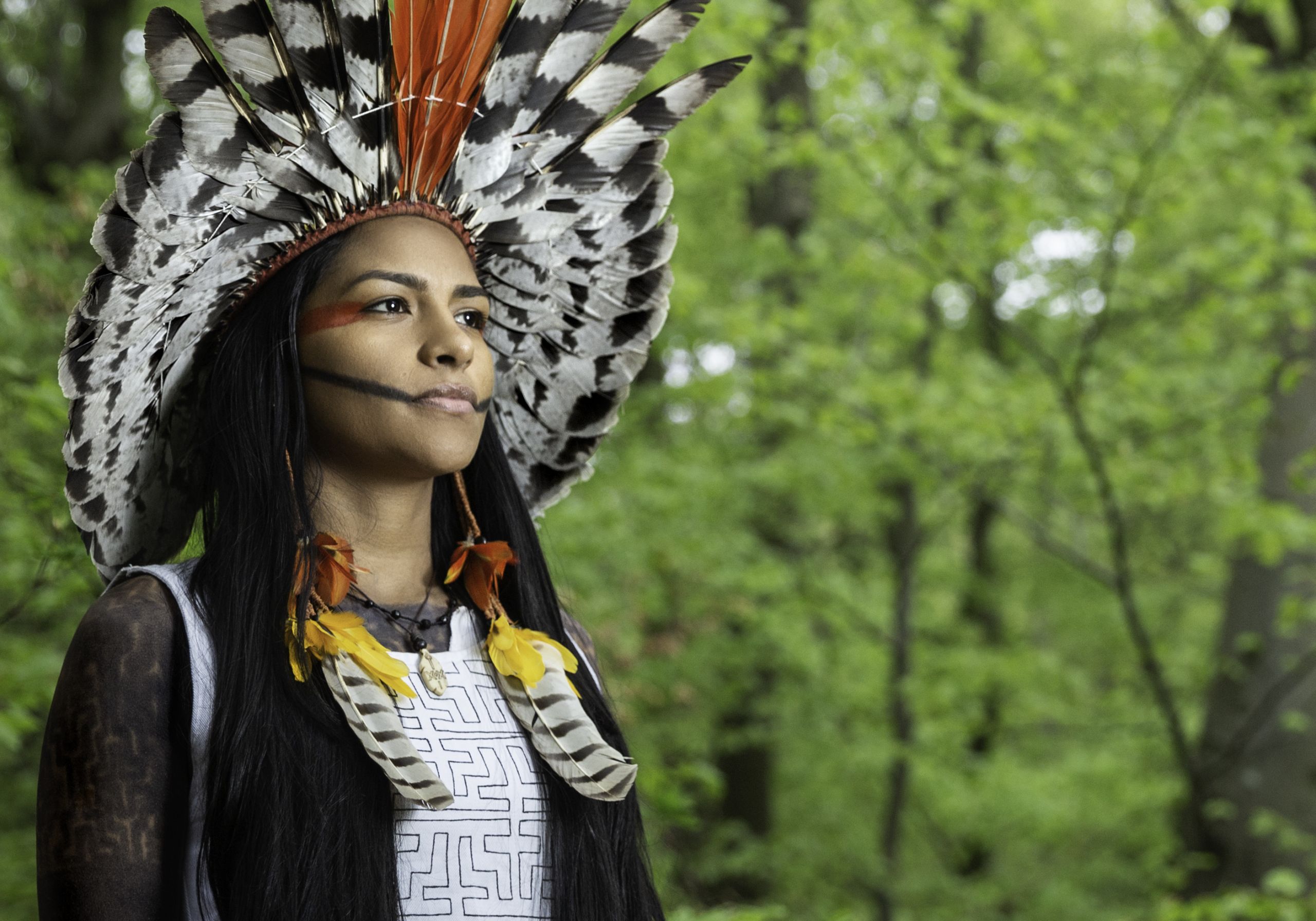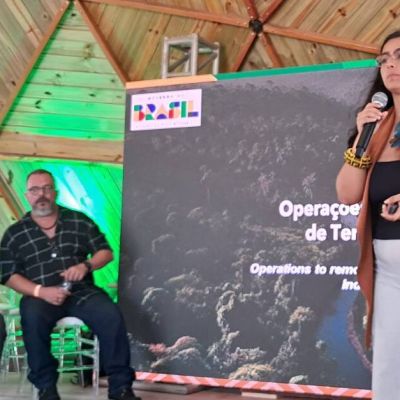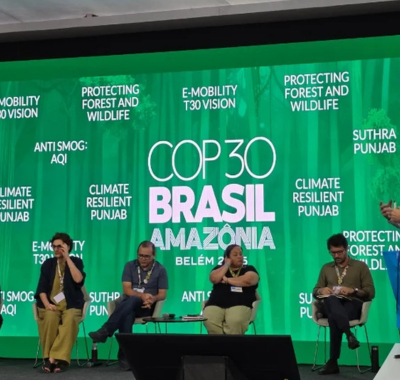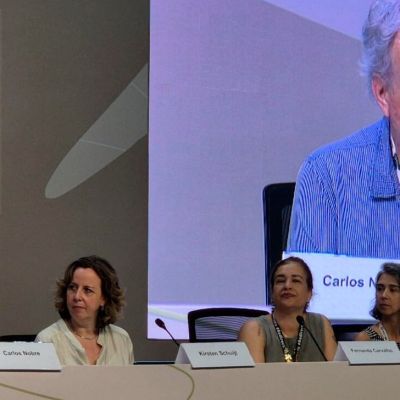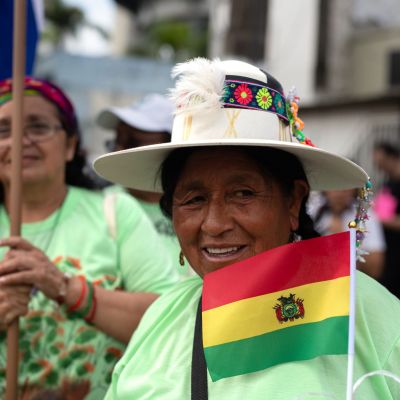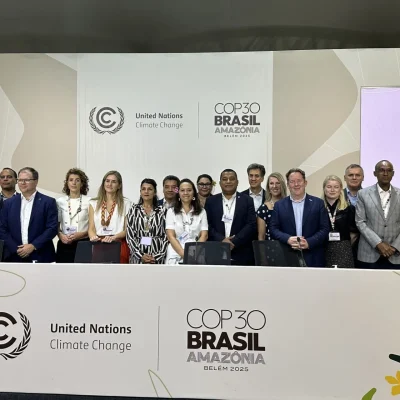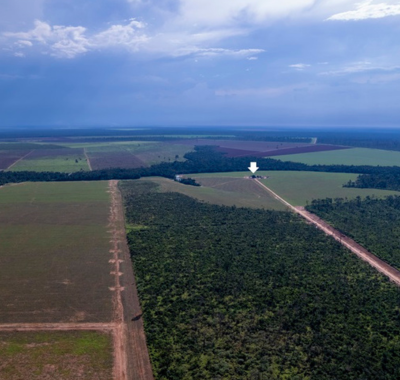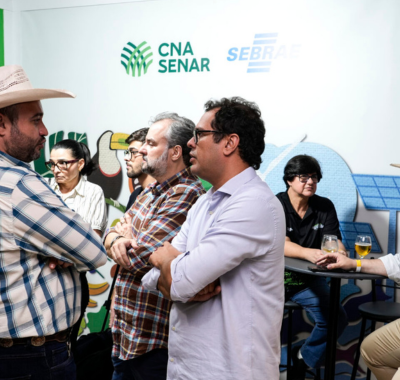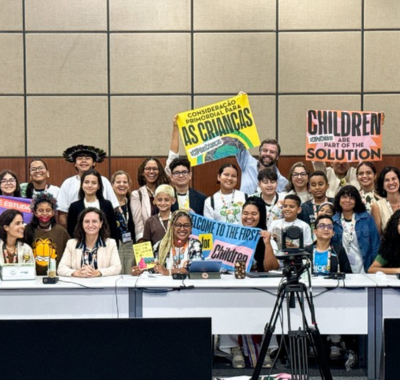Women Environmental Defenders from the Amazon and Africa Draw Parallels from the Frontlines of the Climate Crisis at COP30
Juma Xipaia and Joanita Babirye, two leaders from the Global South, report on violence, funding barriers, and the erasure of women in climate policy— and advocate for the conference to recognize those who support real solutions in the territories.
By: Gabi Coelho
Translated by Diego Lopes/Verso Tradutores
The climate crisis has a face, a territory, and a gender. In Uganda, East Africa, prolonged droughts, crop failures, and forced displacement primarily affect rural communities that depend on agriculture and forests for survival. In the Brazilian Amazon, Indigenous Peoples and traditional communities also face the same challenges, in addition to deforestation, invasions, violence, and the expansion of extractive projects that threaten their ways of life and their very existence.
In the Global South, women are on the front lines, leading processes of territorial defense, climate education, environmental protection, and political resistance. They organize communities, denounce violations, and build local solutions for mitigation and adaptation— often with little or no funding.
According to UN Women, only 0.01% of global climate finance directly reaches initiatives led by Indigenous women. In Uganda, grassroots women’s organizations report facing hours-long queues at banks to apply for microloans, while fossil fuel megacorporations continue to receive billions in investments. In the Amazon, female environmental defenders report suffering specific forms of gender-based violence, which intensify when they occupy leadership positions.
It is in this context that two voices meet at the 30th United Nations Climate Change Conference (COP30): Joanita Babirye, co-founder of Girls for Climate Action, a Ugandan youth feminist movement that works on political education, adaptation solutions based on traditional knowledge, and the defense of rivers and forests threatened by industrial projects.
And Juma Xipaia, a Brazilian Indigenous leader born in the Tukamã village, on the banks of the Iriri River in Pará. For years, she has denounced the violence against Amazonian territories, defended the leading role of Indigenous women in protecting the forest, and demanded that the world recognize those who keep the Amazon standing.
The two were interviewed separately, and here we present their responses in dialogue to connect struggles that, although separated by an ocean, share the same axis.
The climate crisis is affecting different territories, but the women who resist in these places see common pains and challenges. We asked them how they identify these parallels.
Joanita Babirye — Just like in the Amazon, many people in Uganda also depend on the forests, both in the southwest and northeast and central regions of the country. They depend on the forests for livelihoods, medicinal purposes, food, healing, and to connect with nature.
Just as in the Amazon, the forests in Uganda are also being threatened by industries that occupy these areas to plant sugarcane, cut timber, and produce charcoal. There’s no way we can say we are free in Uganda while Amazonian women are not free. If we are not free, nobody is.
Juma Xipaia — We, women in struggle, share the same challenge: silencing and exclusion from decision-making spaces. We need to shout twice as loud for our voices to be heard and respected, even more so because we belong to the Global South and are non-white.
A striking example was that of Ugandan activist Vanessa Nakate, silenced by the media in 2020 when she was cropped out of a photo with other young activists at the World Economic Forum simply for being the only Black person. She remained steadfast, drawing attention to the impacts of the climate crisis on Africa, a continent that deeply suffers its consequences despite being one of the least responsible for global pollution. We cannot afford to give up or stop fighting. We share the same goal of defending life, humanity, the planet, and future generations.
In many territories, women are at the forefront of environmental protection. They explain why they take on this leading role—and why it needs to be recognized.
Joanita Babirye — We come from agricultural and fishing communities, and any change in climate or any form of environmental degradation affects us differently. As girls, young women, and women, we are the ones who seek food. We are victims of climate impacts, but we are also leading change in our communities because we are bearers of knowledge; we have the Indigenous knowledge necessary to drive climate ambition, adaptation, and building our own resilience. That is why feminist resistance is a global force that connects the Amazon to Africa and Uganda.
Juma Xipaia — We women have a connection with the forests. We are guardians of ancestral wisdom and the spiritual connection with nature. I remember that, even without a voice at that time [the time of their ancestors], it was the women who stood up to say, “There will be no illegal mining here.” When a woman stands up in defense of the forest, she is defending the life and future of us all.
Territorial defense has a gender—and so does the risk. We ask how violence manifests itself for those who dare to protect rivers and forests.
Joanita Babirye — In Uganda, there are many threats against environmental defenders. Part of our job is fighting for water justice in areas that depend on the Nile River and its streams for survival, but which have also been mapped as industrial hubs of the country. It has been very difficult to participate in these processes without suffering threats. While we defend these causes, we face a lot of intimidation, threats, and harassment. Coming from a group where we are all women, we see that there is gender-based intimidation, gender-based violence that enters our spaces.
Juma Xipaia — We women have a connection with the forests; we share with them the power of creation and care. We are guardians of ancestral wisdom and the spiritual connection with nature. We carry the knowledge of traditional medicine and know how to find cures for the body and soul in the forest. I come from a lineage of extraordinarily strong women.
The money circulating in the COPs rarely reaches the hands of those who create solutions on the ground. We asked how they experience—in practice—the lack of direct funding.
Joanita Babirye — Funding has been the biggest barrier to scaling our impact and replicating solutions created by women in other communities. When we arrive at spaces like this [COP30] and see so many promises of millions of dollars, we wonder how much of that money actually reaches grassroots organizations like Girls for Climate Action.
Some of the solutions that work are precisely the most underfunded. Women face many difficulties accessing resources from financial institutions; it can take more than three hours in line just to try to get a loan. And they already have an enormous workload at home, so this time is yet another burden. Funding needs to be direct, flexible, and accessible.
Juma Xipaia — Indigenous women’s access to climate funding is still very limited. Most international resources don’t reach the grassroots level, where the true guardians of the forest are. Without investing in Indigenous women, there is no effective climate action.
COP30 is taking place in the Amazon. What do they expect from a mega climate event held on Indigenous territory?
Joanita Babirye — This COP is being called the COP of truth, and I think we need to move beyond rhetoric and take action. At every COP we hear that action is needed, implementation is needed, but at the same time, this is a COP where we want the Gender Action Plan to be adopted.
It is very frustrating to see that we are still discussing the definition of gender, diversity, sexual and reproductive rights, instead of focusing on the realities and shared experiences of young women and girls in all their diversity. Many governments have said, since the opening, that this is the COP of implementation. But what does implementation mean when central voices are absent from these decision-making spaces and when we are not allocating sufficient resources to women-led climate solutions?
This needs to be a COP where a decision is made on the Gender Action Plan and where we stop wasting time on language debates that don’t move us forward. We also need more women in these decision-making spaces—and that’s not optional, it’s vital.
Juma Xipaia — We hope that COP30 will bring concrete actions and real commitments. Protecting our territories is guaranteeing climate resilience and the survival of all. The answer the future needs is us. The Amazon still exists because we are here to protect it.
This report was produced by InfoAmazonia, through the Collaborative Socio-environmental Coverage of COP 30. Read the original report here.

